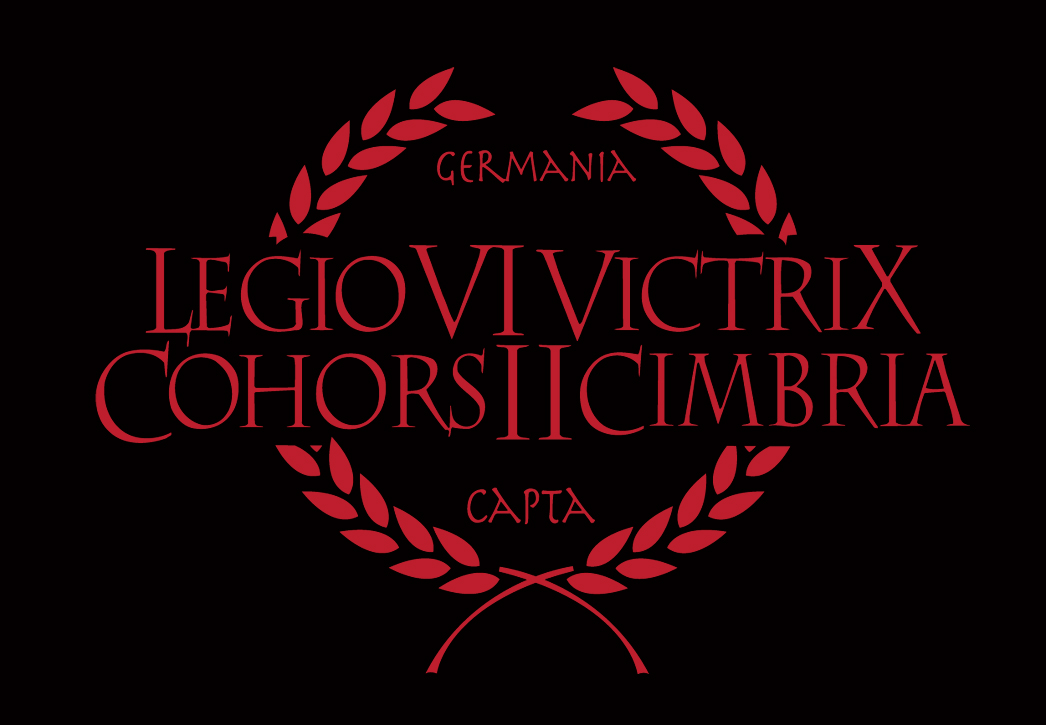Equipment - Proprius Militarius Dolatis
Most people have a clear picture of how a Roman legionnaire must have looked like. Over the past 100 years, movies and comics have given us a fairly fixed image. And the Romans' own images, on monuments and other art, is also a source to have influenced the image of a Roman Legionnaire.
Trajan's column in Rome has been a major source for this image. This incredible antique "cartoon" that describes the Emperor Trajan's campaign in Dacia – the current Romania – is filled with detailed photos of Legionnaires in the field. Here one clearly sees the legionnaires wearing the famous Lorica Segmentata - the roman plate armour. We also see that the legionnaire's helmet had a small neck protector and narrow cheek plates. And we see small Scutae - Shields - all with symbols like thunderbolts and eagle wings – that represent some kind of unity. What the reliefs do not show is materials and colors. Therefore It was common to think, in the 19th century, that the legionaries were barefooted, since sandals originally had been painted on their feet. It was also thought that the Segmentata was made of leather and it was believed that the helmets had narrow cheek plates that gave an open face.
Archaeology
In the late 19th century however, the image started to change because of the new science; Archaeology. Archaeologists throughout Europe began to excavate original parts of the legionnaire's equipment who told a different story. In 1937 an excavation of the ancient city of Dura Europos in Syria revealed what was to date, the only complete legionnaire's shield from the imperial army, which turned out to be considerably larger – ca. 80 x 120 cm. – than those depicted on Roman imperial art. And in 1964 in Corbridge, England, a box containing 3 whole segmentata’s was found. showing how the Segmentata really looked like.
More Archeological and written sources
Looking at older pictures of COHORS II, you see that during our first years we had a different shield livery. But new knowledge and new theories show that not all legions had the famous thunderbolts and eagle wings as depicted on Trajans Column. That is why we changed our shield livery to a more credible image. And will probably do it again, if a new theory proves the current one wrong.
Another example is the legionnaire's tunic. In the early COHORS II the legionnaire's tunic is still the traditional red colour. But in fact, there is no scientific evidence that the Roman Legionaries wore red tunics. What is known from written sources is, from a papyrus from the year 138 AD found in Egypt, with an order for a weave room in Philadelphia from the roman army in Cappadocia, – telling that the tunic was white with red stripes (Clavii).
In Historia Augusta – wich is an written antique work of Imperial portraits from around 300 AD - we are told that officers – Centurions – wore a "Tunica russa ducalis" or "Tunica russa militaris". A red military tunic, but nothing about the colors of the legionnaire's tunic. This is the reason why we, as reenactors must constantly develop our equipment. As we learn new things all the time. We are always trying to access the Roman legionnaire with great humility, knowing that we do not have all the answers, only a qualified guess.



